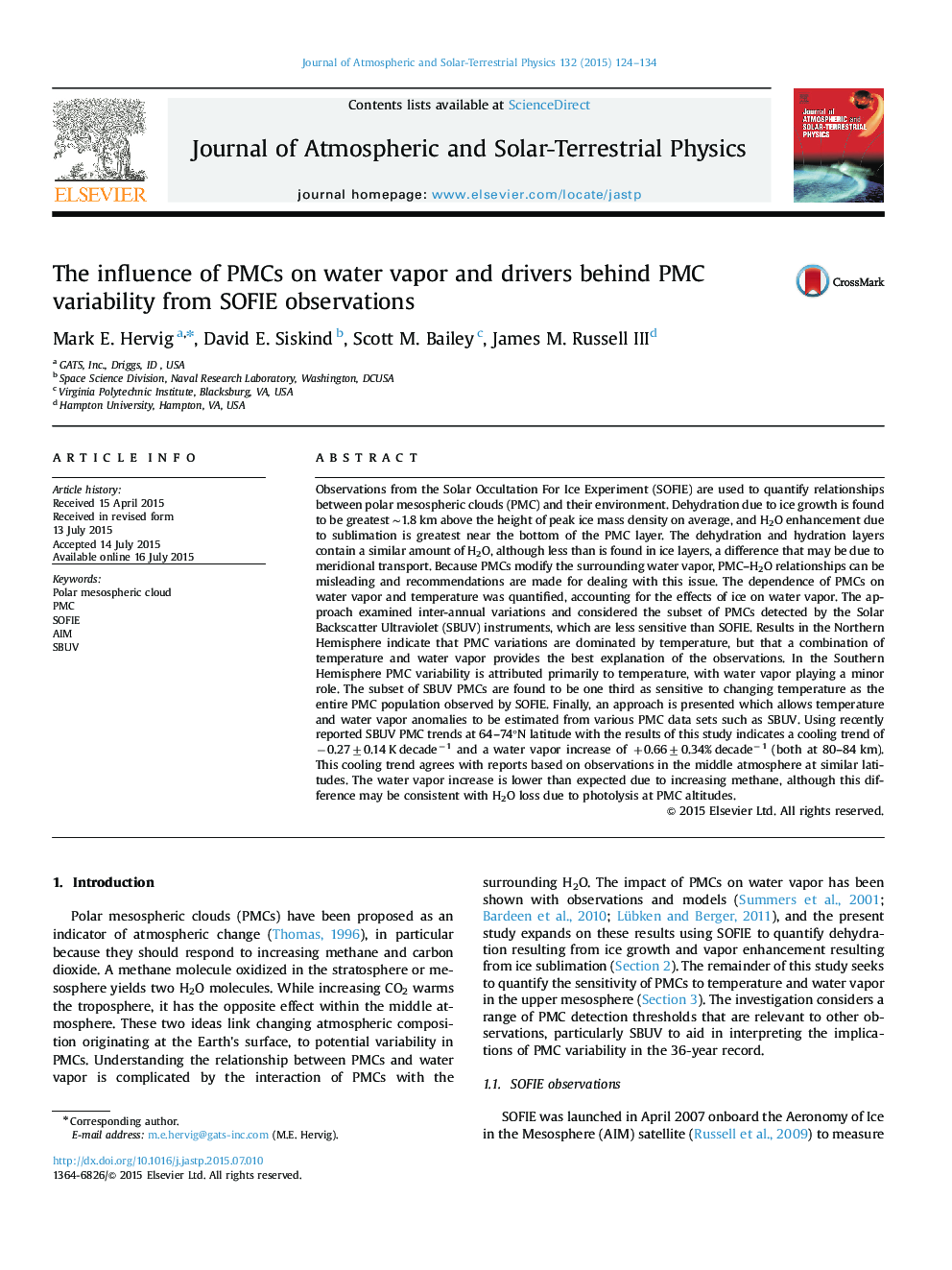| کد مقاله | کد نشریه | سال انتشار | مقاله انگلیسی | نسخه تمام متن |
|---|---|---|---|---|
| 1776387 | 1523612 | 2015 | 11 صفحه PDF | دانلود رایگان |

• Water vapor loss and enhancement associated with PMCs is quantified.
• The impact of ice on H2O in PMC modeling is small for long term averages.
• The role of temperature and H2O in PMC variability is quantified.
• Results are formulated for application to other data such as SBUV.
• Temperature trends implied by SBUV are consistent with observed trends.
Observations from the Solar Occultation For Ice Experiment (SOFIE) are used to quantify relationships between polar mesospheric clouds (PMC) and their environment. Dehydration due to ice growth is found to be greatest ∼1.8 km above the height of peak ice mass density on average, and H2O enhancement due to sublimation is greatest near the bottom of the PMC layer. The dehydration and hydration layers contain a similar amount of H2O, although less than is found in ice layers, a difference that may be due to meridional transport. Because PMCs modify the surrounding water vapor, PMC–H2O relationships can be misleading and recommendations are made for dealing with this issue. The dependence of PMCs on water vapor and temperature was quantified, accounting for the effects of ice on water vapor. The approach examined inter-annual variations and considered the subset of PMCs detected by the Solar Backscatter Ultraviolet (SBUV) instruments, which are less sensitive than SOFIE. Results in the Northern Hemisphere indicate that PMC variations are dominated by temperature, but that a combination of temperature and water vapor provides the best explanation of the observations. In the Southern Hemisphere PMC variability is attributed primarily to temperature, with water vapor playing a minor role. The subset of SBUV PMCs are found to be one third as sensitive to changing temperature as the entire PMC population observed by SOFIE. Finally, an approach is presented which allows temperature and water vapor anomalies to be estimated from various PMC data sets such as SBUV. Using recently reported SBUV PMC trends at 64–74°N latitude with the results of this study indicates a cooling trend of −0.27±0.14 K decade−1 and a water vapor increase of +0.66±0.34% decade−1 (both at 80–84 km). This cooling trend agrees with reports based on observations in the middle atmosphere at similar latitudes. The water vapor increase is lower than expected due to increasing methane, although this difference may be consistent with H2O loss due to photolysis at PMC altitudes.
Journal: Journal of Atmospheric and Solar-Terrestrial Physics - Volume 132, September 2015, Pages 124–134